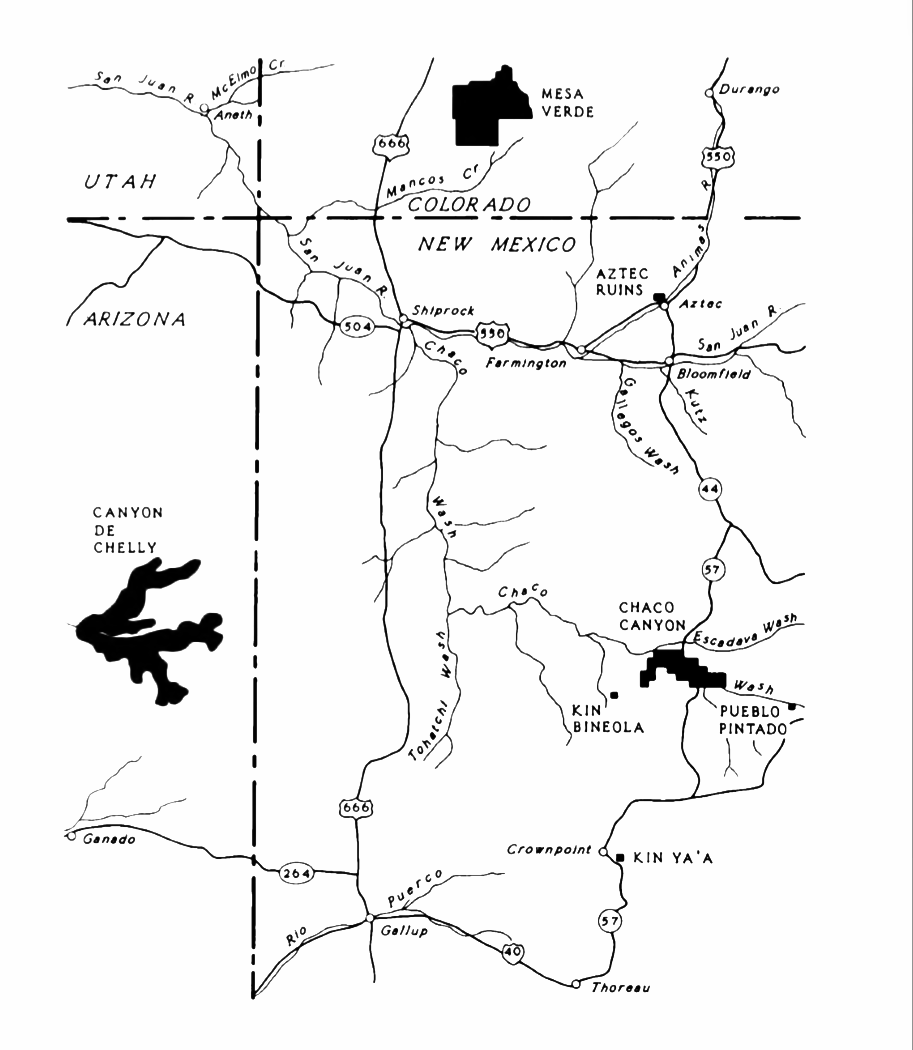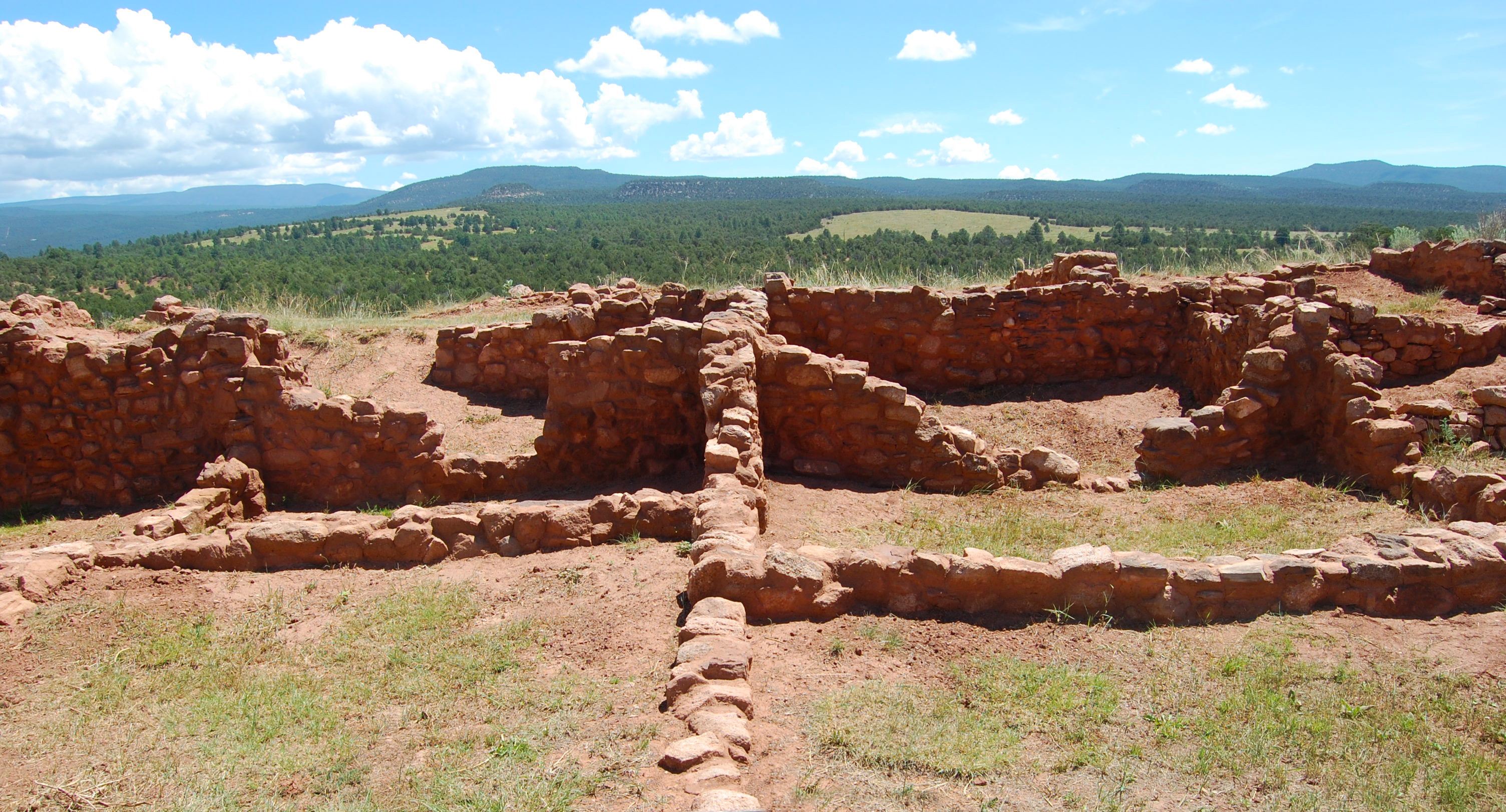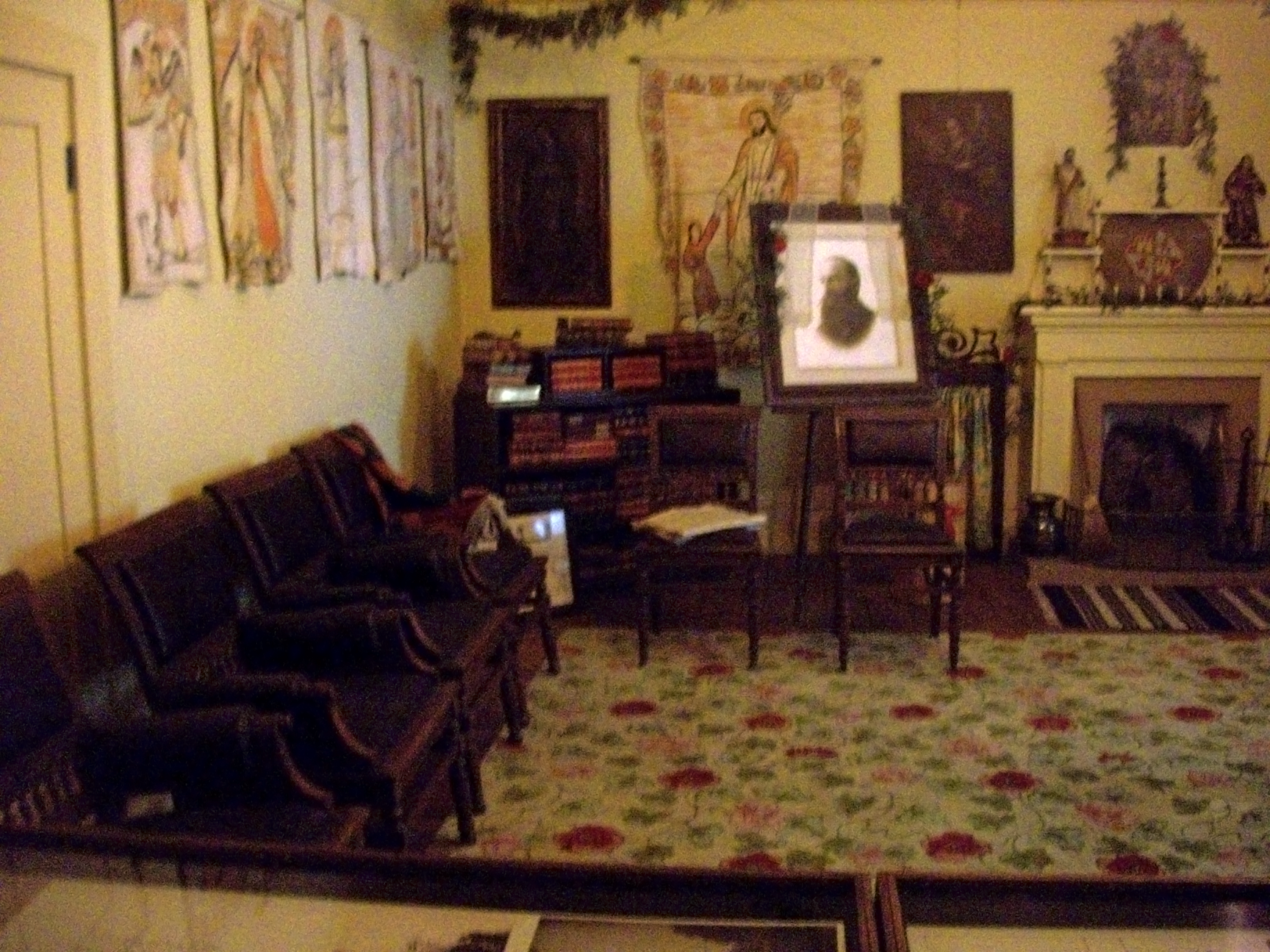|
Jesse L. Nusbaum
Jesse Logan Nusbaum (1887–1975), was an American archaeologist, anthropologist, photographer and National Park Service Superintendent who lived in the American Southwest, where he made significant achievements in the identification, documentation, restoration and preservation of the region's Native American and Spanish Colonial architectural and cultural heritage. Personal life Jesse L. Nusbaum was born in Greeley, Colorado, on September 3, 1887, to Edward Moore and Agnes Strickland (Moodie) Nusbaum. His parents and maternal grandparents were members of the original Greeley colony organized by Horace Greeley. Nusbaum married Aileen Baehrens O'Bryan, who had one son, Deric, from a previous marriage, on September 21, 1920. Jesse and Aileen divorced in 1939. Nusbaum subsequently married Rosemary Lewis Rife, a nurse, on December 11, 1947. He died in Santa Fe, New Mexico, on December 21, 1975, at the age of 88. A few years later, his wife, Rosemary, published two books on parts of ... [...More Info...] [...Related Items...] OR: [Wikipedia] [Google] [Baidu] |
Greeley, Colorado
Greeley is the home rule municipality city that is the county seat and the most populous municipality of Weld County, Colorado, United States. The city population was 108,795 at the 2020 United States census, an increase of 17.12% since the 2010 United States census. Greeley is the tenth most populous city in Colorado. Greeley is the principal city of the Greeley, CO Metropolitan Statistical Area and is a major city of the Front Range Urban Corridor. Greeley is located in northern Colorado and is situated north-northeast of the Colorado State Capitol in Denver. The city is a college town, home to the University of Northern Colorado and Aims Community College. History Union Colony Greeley began as the Union Colony of Colorado, which was founded in 1869 by Nathan C. Meeker, an agricultural reporter for the ''New York Tribune'', as an experimental utopian farming community "based on temperance, religion, agriculture, education and family values," with the backing ... [...More Info...] [...Related Items...] OR: [Wikipedia] [Google] [Baidu] |
Ancestral Puebloan
The Ancestral Puebloans, also known as Ancestral Pueblo peoples or the Basketmaker-Pueblo culture, were an ancient Native American culture of Pueblo peoples spanning the present-day Four Corners region of the United States, comprising southeastern Utah, northeastern Arizona, northwestern New Mexico, and southwestern Colorado. They are believed to have developed, at least in part, from the Oshara tradition, which developed from the Picosa culture. The Ancestral Puebloans lived in a range of structures that included small family pit houses, larger structures to house clans, grand pueblos, and cliff-sited dwellings for defense. They had a complex network linking hundreds of communities and population centers across the Colorado Plateau. They held a distinct knowledge of celestial sciences that found form in their architecture. The kiva, a congregational space that was used mostly for ceremonies, was an integral part of the community structure. Archaeologists continue to d ... [...More Info...] [...Related Items...] OR: [Wikipedia] [Google] [Baidu] |
Pecos Pueblo
Pecos National Historical Park is a United States National Historical Park in San Miguel County, New Mexico. The park, operated by the National Park Service, encompasses thousands of acres of landscape infused with historical elements from prehistoric archaeological ruins to 19th-century ranches, to a battlefield of the American Civil War. Its largest single feature is Pecos Pueblo also known as Cicuye Pueblo, a Native American community abandoned in historic times. First a state monument in 1935, it was made Pecos National Monument in 1965, and greatly enlarged and renamed in 1990. Two sites within the park, the pueblo and the Glorieta Pass Battlefield, are National Historic Landmarks. Features Pecos National Historical Park's main unit is located in western San Miguel County, about east of Santa Fe and just south of Pecos. Pecos Pueblo The main unit of the park preserves the ruins of Pecos Pueblo, known historically as Cicuye (sometimes spelled Ciquique), the "vill ... [...More Info...] [...Related Items...] OR: [Wikipedia] [Google] [Baidu] |
Maya Civilization
The Maya civilization () was a Mesoamerican civilization that existed from antiquity to the early modern period. It is known by its ancient temples and glyphs (script). The Maya script is the most sophisticated and highly developed writing system in the pre-Columbian Americas. The civilization is also noted for its art, architecture, mathematics, calendar, and astronomical system. The Maya civilization developed in the Maya Region, an area that today comprises southeastern Mexico, all of Guatemala and Belize, and the western portions of Honduras and El Salvador. It includes the northern lowlands of the Yucatán Peninsula and the Guatemalan Highlands of the Sierra Madre, the Mexican state of Chiapas, southern Guatemala, El Salvador, and the southern lowlands of the Pacific littoral plain. Today, their descendants, known collectively as the Maya, number well over 6 million individuals, speak more than twenty-eight surviving Mayan languages, and reside in nearly the s ... [...More Info...] [...Related Items...] OR: [Wikipedia] [Google] [Baidu] |
Fred Harvey (entrepreneur)
Frederick Henry Harvey (June 27, 1835 – February 9, 1901) was an entrepreneur who developed the Harvey House lunch rooms, restaurants, souvenir shops, and hotels, which served rail passengers on the Atchison, Topeka and Santa Fe Railway, the Gulf Colorado and Santa Fe Railway, the Kansas Pacific Railway, the St. Louis-San Francisco Railway, and the Terminal Railroad Association of St. Louis. As an innovative restaurateur and marketer, Fred Harvey is credited with creating the first restaurant chain in the United States. He was also a leader in promoting tourism in the American Southwest in the late 19th century. Fred Harvey and his employees successfully brought new higher standards of both civility and dining to a region widely regarded in the era as "the Wild West." He created a legacy which was continued by his sons and remained in the family until the death of a grandson in 1965. Despite the decline of passenger train patronage in the United States in the 20th century wi ... [...More Info...] [...Related Items...] OR: [Wikipedia] [Google] [Baidu] |
San Diego
San Diego ( , ) is a city on the Pacific coast of Southern California, adjacent to the Mexico–United States border. With a population of over 1.4 million, it is the List of United States cities by population, eighth-most populous city in the United States. San Diego is the county seat, seat of San Diego County. It is known for its mild Mediterranean climate, extensive List of beaches in San Diego County, beaches and List of parks in San Diego, parks, long association with the United States Navy, and recent emergence as a wireless, electronics, List of hospitals in San Diego, healthcare, and biotechnology development center. Historically home to the Kumeyaay people, San Diego has been referred to as the ''Birthplace of California'', as it was the first site visited and settled by Europeans on what is now the West Coast of the United States. In 1542, Juan Rodríguez Cabrillo claimed the area for Spain, forming the basis for the settlement of Alta California, 200 years later. ... [...More Info...] [...Related Items...] OR: [Wikipedia] [Google] [Baidu] |
Panama–California Exposition
The Panama–California Exposition was a World's fair, world exposition held in San Diego, California, between January 1, 1915, and January 1, 1917. The exposition celebrated the opening of the Panama Canal, and was meant to tout San Diego as the first United States port of call for ships traveling north after passing westward through the canal. The fair was held in San Diego's large urban Balboa Park (San Diego), Balboa Park. The park held a second Panama-California exposition in 1935. Proposal and formation In 1909, San Diego's Chamber of Commerce president and local businessman Gilbert Aubrey Davidson proposed an exposition to commemorate the completion of the Panama Canal.Amero (2013), p. 13 San Diego's population in 1910 was 37,578, and it would be the least populated city to ever host an international exposition. In contrast, San Francisco had a population nearly 10 times larger and would ultimately be supported by politicians in California and Washington, D.C. for the off ... [...More Info...] [...Related Items...] OR: [Wikipedia] [Google] [Baidu] |
Atchison, Topeka And Santa Fe Railway
The Atchison, Topeka and Santa Fe Railway , often referred to as the Santa Fe or AT&SF, was one of the largest Class 1 railroads in the United States between 1859 and 1996. The Santa Fe was a pioneer in intermodal freight transport; at various times, it operated an airline, the short-lived Santa Fe Skyway, and the Santa Fe Railroad tugboats. Its bus line extended passenger transportation to areas not accessible by rail, and ferryboats on the San Francisco Bay allowed travelers to complete their westward journeys to the Pacific Ocean. The AT&SF was the subject of a popular song, Harry Warren and Johnny Mercer's " On the Atchison, Topeka and the Santa Fe", written for the film '' The Harvey Girls'' (1946). The railroad officially ceased independent operations on December 31, 1996, when it merged with the Burlington Northern Railroad to form the Burlington Northern and Santa Fe Railway. History Atchison, Topeka & Santa Fe Railway The railroad was chartered in February 1859 ... [...More Info...] [...Related Items...] OR: [Wikipedia] [Google] [Baidu] |
Charles Fletcher Lummis
Charles Fletcher Lummis (March 1, 1859 – November 25, 1928) was an American journalist, civil rights activist, preservationist, poet and librarian who promoted Native American rights and historic preservation. He founded the Southwest Museum of the American Indian. Lummis began his career as a printer and wrote poems. He traveled in the American Southwest, and settled in Los Angeles, California, where he became known as a historian, photographer, ethnographer and archaeologist. He worked as a city editor for the ''Los Angeles Times''. After being paralyzed, he lived in a Pueblo Indian village and began promoting Native American rights. Later in his life he was a city librarian at the Los Angeles Public Library. Early life and career Lummis was born in 1859, in Lynn, Massachusetts. He lost his mother at age two and was homeschooled by his father, who was a schoolmaster and a Methodist minister. Lummis enrolled in Harvard for college and was a classmate of Theodore Roosevelt, ... [...More Info...] [...Related Items...] OR: [Wikipedia] [Google] [Baidu] |
Museum Of New Mexico
The Museum of New Mexico is a collection of museums, historic sites, and archaeological services governed by the State of New Mexico. It currently consists of six divisions: the Palace of the Governors state history museum, the New Mexico Museum of Art, the Museum of Indian Arts and Culture, the Museum of International Folk Art, the archaeology division, and the state historic sites. Each division within the Museum of New Mexico adheres to policies decided by the Museum of New Mexico Board of Regents, a group of New Mexico residents appointed by the governor with consent of the Senate. History The Museum of New Mexico was established on February 19, 1909, by the New Mexico Territorial legislature. This pre-statehood legislation mandated that the Museum of New Mexico be housed in the historic Palace of the Governors in Santa Fe. Over the years, the Museum of New Mexico added several other properties to include the New Mexico Museum of Art, Laboratory of Anthropology, Museum of In ... [...More Info...] [...Related Items...] OR: [Wikipedia] [Google] [Baidu] |
Palace Of The Governors
The Palace of the Governors () is an adobe structure built in the Territorial Style of Pueblo architecture on Palace Avenue in Santa Fe, New Mexico. Located within the Santa Fe Historic District along the Santa Fe Plaza between Lincoln and Washington avenues, it served as the seat of government for New Mexico for centuries, having been established as the capitol building of '' Nuevo México'' in 1610. It was New Mexico's seat of government until 1901. History In 1610, Pedro de Peralta, the newly appointed governor of ''Santa Fe de Nuevo México'' covering most of the modern American Southwest, began construction on the Palace of the Governors, though some recent historical research has suggested that construction began midway through his term in 1618. In the following years, the Palace changed hands as the territory of New Mexico did, seeing the Pueblo Revolt of 1680, the Spanish return from 1693 to 1694, Mexican independence in 1821, American territorial status in 1848, and U ... [...More Info...] [...Related Items...] OR: [Wikipedia] [Google] [Baidu] |







